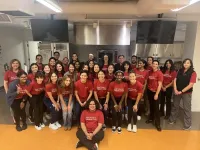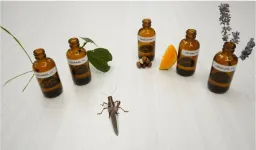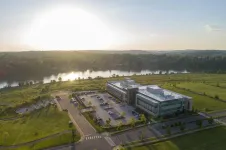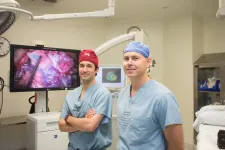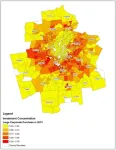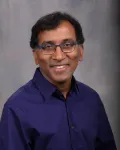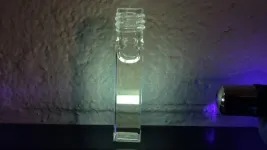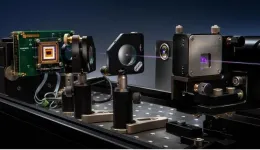(Press-News.org)
Primary care provides critical support for the global health care system. But in many communities across the country and around the world, primary care physicians are in short supply.
To help bridge that gap and inspire more students to choose careers in primary care, the Keck School of Medicine of USC launched its Primary Care Initiative in 2011. A key part of the initiative, the Primary Care Program (PCP), is an educational track that provides medical students with a range of patient-centered, hands-on experiences in the local community to prepare them for a career in family medicine, internal medicine or pediatrics.
A review of PCP data over the past eight years, just published in the journal Family Medicine, reveals the program’s success at recruiting students and guiding them toward careers in primary care. Among PCP graduates, 70% matched into primary care residencies after medical school, compared to just 36% of non-PCP graduates from the Keck School of Medicine. Additionally, across the school, more students matched into primary care residencies in the eight years after the program launched compared to the eight years before.
“In a world where we don’t have enough primary care providers, we’re exposing students early to the many joys and opportunites within primary care fields. The success of this program can serve as a roadmap for other institutions,” said the study’s lead author, Jo Marie Reilly, MD, MPH, a professor of family medicine and director of the Primary Care Initiative at the Keck School of Medicine.
Thirty-nine percent of PCP graduates came from backgrounds that are underrepresented in medicine. Many reported coming to KSOM specifically because of the program, Reilly said, and plan to return to serve their communities after they finish training.
“We’re attracting diverse students, training them to become primary care leaders, and providing them with multiple clinical tools to do it,” she said.
Skill-based training
The Keck School of Medicine’s PCP provides students with a series of patient- and community-centered experiences that help them develop the skills and expertise central to a successful career in primary care medicine. Highlights include long-term mentorship with a primary care physician in the local community, where students work directly with patients in an outpatient setting; health education and community advocacy training to provide nutrition, exercise and cooking classes for patients in Los Angeles County; research opportunities; leadership and interprofessional skills-based training in older adult care; and learning alongside a cohort of like-minded students.
“The multi-faceted nature of the program is really what’s special here,” Reilly said. “We’re doing skill-based, hands-on training to prepare students to work in primary care.”
In the eight years before the program began, 33% of Keck School of Medicine students matched into primary care residencies after graduation. In the eight years after it launched, 39% matched into primary care residencies.
Between 2015 and 2022, 134 students completed the PCP, with 70% matching into primary care residencies. Thirty-seven percent of graduates went into family medicine, 16% into internal medicine and 10% into pediatrics.
Of program graduates, 70% were female, 29% were Asian, 29% were Latino, 10% were Black, and 1% came from a different racial or ethnic background. Overall, 39% of program graduates came from groups traditionally underrepresented in medicine.
Providing a roadmap
Reilly and her coauthor, Ilana Greenberg, MPH, who manages the PCP, are now analyzing data on alumni of the program. Many continue to work in community settings, are teaching the next generation of PCP students, and have even taken on clinical and community leadership roles.
Part of what’s unique about the Keck School of Medicine’s program is its success in graduating students who serve local communities, even from a private, research- and subspecialty-focused institution that does not receive state or federal funding, Reilly said.
“This program can serve as a model for other schools interested in increasing the ranks of primary care physicians,” Greenberg said.
About Keck School of Medicine of USC
Founded in 1885, the Keck School of Medicine of USC is one of the nation’s leading medical institutions, known for innovative patient care, scientific discovery, education and community service. Medical and graduate students work closely with world-renowned faculty and receive hands-on training in one of the nation’s most diverse communities. They participate in cutting-edge research as they develop into tomorrow’s health leaders. The Keck School faculty are key participants in training of 1200 resident physicians across 70 specialty and subspecialty programs, thus playing a major role in the education of physicians practicing in Southern California.
To learn more about the Keck School of Medicine’s Primary Care Program, visit primarycare.usc.edu.
END
Everyone has scents that naturally appeal to them, such as vanilla or coffee, and scents that don’t appeal. What makes some smells appealing and others not?
Barani Raman, a professor of biomedical engineering at the McKelvey School of Engineering at Washington University in St. Louis, and Rishabh Chandak, who earned bachelor’s, master’s and doctoral degrees in biomedical engineering in 2016, 2021 and 2022, respectively, studied the behavior of the locusts and how the neurons in their brains responded to appealing and unappealing odors to learn more about how the brain encodes ...
Entrepreneur-fellows in Innovation Crossroads, a Department of Energy Lab-Embedded Entrepreneurship Program at Oak Ridge National Laboratory, will complete the Spark Cleantech Accelerator, a 12-week program offered by the University of Tennessee, Knoxville, Spark Innovation Center at the UT Research Park.
“By combining the resources of Innovation Crossroads and the Spark Cleantech Accelerator, we are building a stronger program for entrepreneurs,” said Dan Miller, program lead for Innovation Crossroads. “Entrepreneurial ecosystems depend on relationships among early-stage companies. This new collaboration — ...
The USC Neuro Revascularization Center (USC NRV Center) performs approximately 40-50 complex revascularization procedures per year, making it one of the most clinically robust programs in the country. Its multidisciplinary approach—combining plastic surgery, vascular surgery, and neurosurgery—is what allows the center to treat the most complex clinical cases and answer some of the toughest research questions.
A recent $500,000 gift from Alfred E. Mann Charities will support clinical excellence, novel research, and educational opportunities at the center with a clear focus ...
LOS ANGELES (August 8, 2023) — Whatever the opioid crisis calls to mind, it likely isn’t pacifiers and diapers. But when 1 out of every 5 hospitalized infants receives opioids, and when some infants require methadone treatment, it’s time to widen the scope. A new study led by pediatric surgeons at Children’s Hospital Los Angeles shows that methadone use after surgery can prolong a baby’s recovery and increase an infant’s dependence on ventilators and intravenous (IV) nutrition.
To call the opioid problem in the United States a crisis is not hyperbole. The rate of death due to opioid overdose has risen ...
Investors have been buying houses at a steady rate since the last recession, but how much does it affect availability in the housing market? New research from the Georgia Institute of Technology shows investors are most likely to push out Black, middle-class homeowners from neighborhoods.
Data from 800 neighborhoods in the Atlanta metropolitan area between 2007 and 2016 revealed that major investors bought homes in majority-minority neighborhoods far from downtowns and in lower-income areas. These homes were often undervalued because of their minority populations, but they remained desirable and offered good market value.
The neighborhoods ...
From building fighter jets to automobiles, the manufacturing world is increasingly adapting digital instruction as technology advances. Mechanical parts can be designed on a computer and shipped over the network to a manufacturing machine that follows digital instructions to produce a specific part. The move into the digital world makes securing online information a national interest.
Dr. Narasimha Reddy, a professor in the Department of Electrical and Computer Engineering at Texas A&M University, recently received a National Science Foundation grant to research cybersecurity ...
Researchers from the United Kingdom hope that a new, publicly available database they have created will shrink, not grow, over time. That’s because it is a compendium of the thousands of understudied proteins encoded by genes in the human genome, whose existence is known but whose functions are mostly not. The database, dubbed the “unknome”, is the work of Matthew Freeman of the Dunn School of Pathology, University of Oxford, England, and Sean Munro of MRC Laboratory of Molecular Biology in Cambridge, England, and ...
Dissolved organic matter (DOM) can be found in every water body on Earth, encompassing both saltwater and freshwater. It is a significant carbon source and is critical in environmental carbon cycling, which is the circulation of carbon in various forms through the environment and nature that makes the Earth sustainable for life.
The interaction between DOM and sunlight is essential for the carbon cycle to function effectively. However, the chemical structure of light-absorbing compounds, also known as chromophores, in DOM remains limited.
Dr. Garrett McKay, principal investigator of the Aquatic Chemistry Lab and assistant professor ...
WASHINGTON — Researchers have reported the first 3D measurements acquired with quantum ghost imaging. The new technique enables 3D imaging on a single photon level, yielding the lowest photon dose possible for any measurement.
“3D imaging with single photons could be used for various biomedical applications, such as eye care diagnostics,” said researcher Carsten Pitsch from the Fraunhofer Institute of Optronics, System Technologies and Image Exploitation and Karlsruhe Institute of Technology, both in Germany. “It can be applied to image materials and tissues that are sensitive to light or drugs that become toxic when exposed ...
This October, NASA is launching the Heliophysics Big Year – a global celebration of solar science and the Sun’s influence on Earth and the entire solar system. Modeled after the “Big Year” concept from citizen scientists in the bird-watching community, the Heliophysics Big Year challenges everyone to get involved with fun Sun-related activities.
For each month from October 2023 to December 2024, the Heliophysics Big Year will celebrate under a theme, sharing opportunities to participate in many solar science events from watching eclipses to joining citizen science projects. During ...
